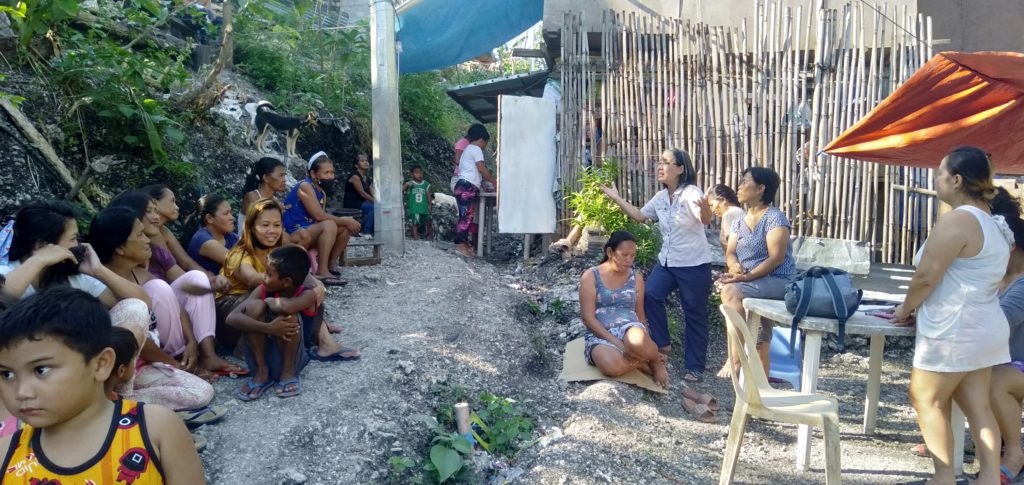A total of 18 members of the Barangay Health Emergency Response Team (BHERTs) and other government employees of Tabuelan attended a post-training monitoring last November 9, 2020 at the Maravilla chapel in Maravilla, Tabuelan.
The participants came from Barangays Tabunok, Maravilla, Tigbawan, and Olivo, and were composed of six barangay health workers (BHWs), three barangay nutrition scholars (BNS), two midwives, five contact tracers and two others.
The Visayas Primary Healthcare Services, Inc. organized the forum as part of the project supported by the United States Agency for International Development (USAID) on COVID-19 response.
The participants were trained on September 8 and October 19 on their roles and functions, infection prevention and control, risk communication and community engagement, gender-based violence, adolescent concerns and water, sanitation and hygiene (WASH). Since then, they are expected to apply what they have learned during the training and there is a need to assess how much they have done so through a post-training monitoring activity.
The activity determined the composition and functionality of the BHERTs, monitored their performance on navigating and listing of contacts, monitoring and reporting of close contacts, monitored their information dissemination of COVID-19 related issues, and monitored how they have facilitated the delivery of continuity of access to essential health services during the COVID-19 pandemic.
There was a workshop composed of groups, with each barangay composing a group. Each group filled up a monitoring tool on the points of monitoring. Then, the leader of the group presented the results of the post-training monitoring tools and shared their experiences with the plenary session regarding the performance of their functions as BHERTs. They also made action plans on how to improve their services.
The participants said that what they had learned in the training were applied in their communities. The training helped them to define their scope of work as BHERTs. It also helped them do the necessary actions for their clients such as proper monitoring and reporting. They became more careful and empathetic towards caring their clients even though they faced different reactions from their clients but they were still able to render the services needed. They were able to give more information regarding what is COVID-19 so that the communities were able to understand the disease. Thus, this also helped the nurses and midwives and the barangay as a whole to control the spread of the pandemic.
The participants said that there is a need to reach out to more individuals and continue to extend services for the communities. Additional information dissemination through the social media, leaflets and other means of spreading the information was seen to be the continuing need of the communities



